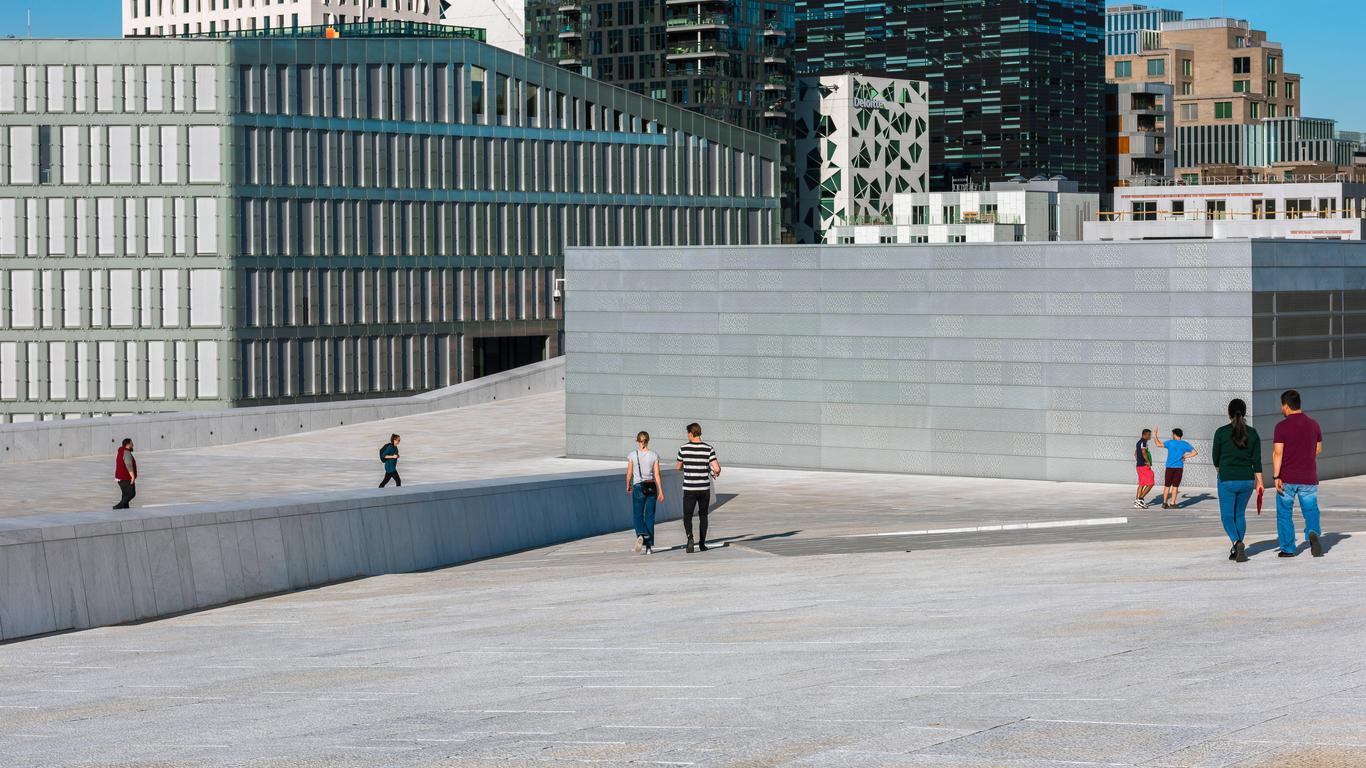Translating as “Old Oslo”, Gamle Oslo encompasses the eastern side of the Norwegian capital, as well as several islands in the Oslofjord. It’s home to the multicultural district of Grønland and the medieval ruins of Middelalderparken, as well as former industrial sites transformed into modern residential, leisure and entertainment areas.
Things to do in Gamle Oslo
Experience the buzz of Grønland, a multicultural neighbourhood renowned for its Middle Eastern stores, laid-back pubs and casual curry houses. You can coincide your visit with a performance by a big-name artist at the Oslo Spektrum arena or learn about Norway’s history of immigration at the Intercultural Museum. Grønland is also home to Oslo’s largest church, the Grønland Church, which is topped by a monumental tower.
Once serving as a container dock, Sørenga has been transformed into a lively district characterised by modern residential complexes, attractive green spaces and waterfront restaurants. If you’re visiting in the summer, you can enjoy a dip at the Sørenga Seawater Pool or soak up the views towards the Akershus Fortress and the Oslo Opera House.
One of Gamle Oslo’s most fascinating green spaces is Middelalderparken, which preserves the stone ruins of two churches and a formal royal estate. Explore the foundations of St. Clement’s Church and the excavated remains of St. Mary’s Church, then follow the motte-and-bailey walls of the Oslo Kongsgård. Middelalderparken lies where the city met the Oslofjord during the Middle Ages and is juxtaposed against the high-rise buildings of the Barcode Project.
Getting around Gamle Oslo
Gamle Oslo is a 40-minute drive from Oslo Airport and is well served by trains connecting to Oslo railway station. Both trams and buses travel throughout Gamle Oslo, while most of the area’s attractions can be accessed on foot.





